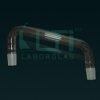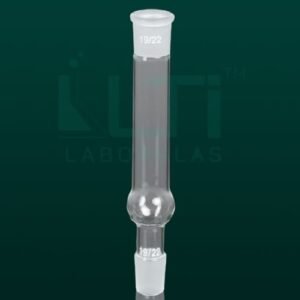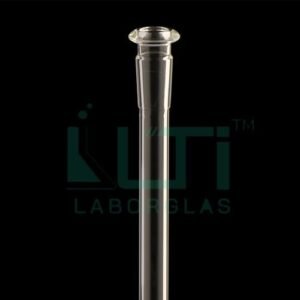Chemical Resistant
| Part No. | BOTH MALE Joint | Offset Centre to Centre | Pack QTY. |
| 2120-24M | 24/40 | 170mm | 10 |
| 2120-29M | 29/42 | 200mm | 10 |
Here are some general uses or applications for a connecting adapter in a laboratory setting:
- Glassware Connection: Connecting adapters are often used to join different pieces of laboratory glassware. They can facilitate the secure and airtight connection between various components of an experimental setup.
- Flexible Experimental Setups: Connecting adapters provide flexibility in configuring experimental setups. Researchers may need to connect different types of glassware or apparatus, and connecting adapters enable them to do so in a modular and adaptable manner.
- Fractional Distillation: In distillation setups, connecting adapters are essential for connecting the boiling flask to the distillation column or connecting different sections of the distillation apparatus.
- Reaction Setups: Connecting adapters play a role in connecting reaction vessels, condensers, and other components in chemical synthesis setups. They enable researchers to design and customize their reaction apparatus based on the specific requirements of a reaction.
- Vacuum Systems: Connecting adapters are often used in vacuum systems to join different components, such as vacuum pumps, traps, and reaction vessels, maintaining a vacuum-tight connection.
- Column Chromatography: In chromatography setups, connecting adapters are used to connect columns, detectors, and other components. They facilitate the flow of solvents and samples through the chromatographic system.
- Fluid Transfer: Connecting adapters are employed in fluid-handling systems to establish connections between different types of tubing, syringes, or other fluid-carrying components.







